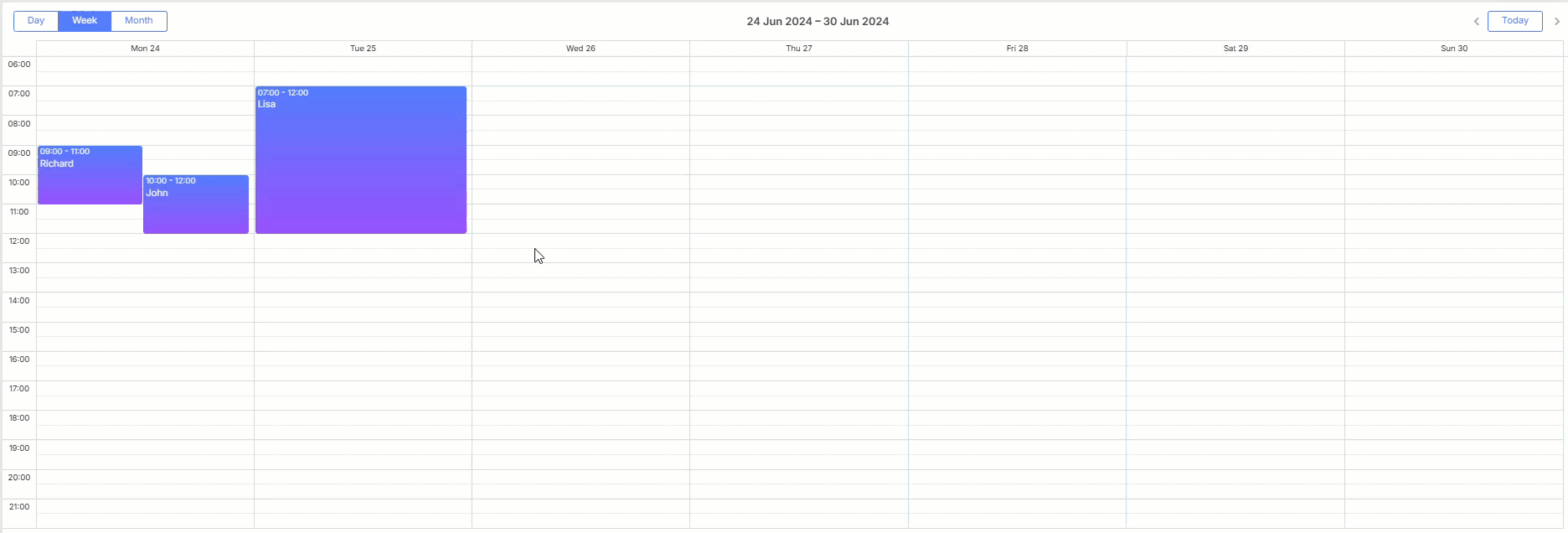5分钟构建RESTful API:Spring Boot Web开发入门
一、RESTful API核心认知
REST(Representational State Transfer)通过HTTP协议实现资源操作,其核心特征包括:
- 资源以URI标识(
/api/users) - 通过HTTP方法表达操作语义(GET/POST/PUT/DELETE)
- 无状态通信
- 返回标准状态码(200/404/500等)
二、项目快速搭建
使用Spring Initializr创建项目:
<!-- pom.xml核心依赖 -->
<dependency><groupId>org.springframework.boot</groupId><artifactId>spring-boot-starter-web</artifactId>
</dependency>
<dependency><groupId>org.projectlombok</groupId><artifactId>lombok</artifactId><version>1.18.30</version>
</dependency>
三、@RestController深度实践
3.1 基础控制器
@RestController
@RequestMapping("/api/users")
public class UserController {// 模拟内存数据库private Map<Long, User> users = new ConcurrentHashMap<>();@GetMapping("/{id}")public User getUser(@PathVariable Long id) {return users.get(id);}
}
3.2 完整CRUD示例
@PostMapping
public ResponseEntity<Void> createUser(@RequestBody User user) {users.put(user.getId(), user);return ResponseEntity.created(URI.create("/users/"+user.getId())).build();
}@PutMapping("/{id}")
public ResponseEntity<User> updateUser(@PathVariable Long id, @RequestBody User user) {if (!users.containsKey(id)) {return ResponseEntity.notFound().build();}users.put(id, user);return ResponseEntity.ok(user);
}@DeleteMapping("/{id}")
public ResponseEntity<Void> deleteUser(@PathVariable Long id) {users.remove(id);return ResponseEntity.noContent().build();
}
四、统一响应封装
4.1 响应体标准化
@Data
public class ApiResponse<T> {private int code; // 业务状态码private String message; // 提示信息private T data; // 业务数据private long timestamp; // 响应时间戳public ApiResponse(int code, String message, T data) {this.code = code;this.message = message;this.data = data;this.timestamp = System.currentTimeMillis();}// 快速构建成功响应public static <T> ApiResponse<T> success(T data) {return new ApiResponse<>(200, "Success", data);}
}
4.2 控制器改造示例
@GetMapping("/{id}")public ResponseEntity<ApiResponse<User>> getUser(@PathVariable Integer id) {User user = users.get(id);if (user == null) {return ResponseEntity.status(HttpStatus.NOT_FOUND).body(new ApiResponse<>(404, "User NOT exists", null));}return ResponseEntity.status(HttpStatus.OK).body(ApiResponse.success(user));}
五、全局异常处理
@ControllerAdvice
public class GlobalExceptionHandler {@ExceptionHandler(Exception.class)@ResponseStatus(HttpStatus.INTERNAL_SERVER_ERROR)public ApiResponse<Void> handleGlobalException(Exception ex) {return new ApiResponse<>(500, "Server Error: " + ex.getMessage(), null);}
}
六、HTTP状态码精准控制
6.1 状态码使用规范
| 状态码 | 使用场景 |
|---|---|
| 200 OK | 常规成功请求 |
| 201 Created | 资源创建成功 |
| 204 No Content | 成功无返回体 |
| 400 Bad Request | 请求参数错误 |
| 401 Unauthorized | 未认证 |
| 403 Forbidden | 无权限访问 |
| 404 Not Found | 资源不存在 |
| 500 Internal Server Error | 服务器内部错误 |
6.2 状态码实战应用
@PostMapping
public ResponseEntity<ApiResponse<User>> createUser(@Valid @RequestBody User user) {if (users.containsKey(user.getId())) {return ResponseEntity.status(HttpStatus.CONFLICT).body(new ApiResponse<>(409, "User already exists", null));}users.put(user.getId(), user);return ResponseEntity.status(HttpStatus.CREATED).body(ApiResponse.success(user));
}
项目结构参考:
src/main/java
└── com.example.demo├── config # 配置类├── controller # 控制器层├── exception # 自定义异常├── model # 数据模型└── response # 响应封装└── Application # 启动类
本文完整源码:
通过标准化响应封装、精确的状态码控制和全局异常处理,开发者可以快速构建出符合RESTful规范的健壮API。这种设计模式不仅提升接口的可维护性,更能显著降低前后端联调成本。后续可结合Spring Data JPA、Redis等组件构建完整的企业级应用。



















